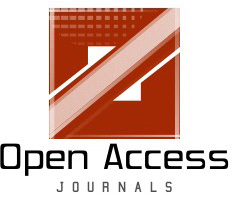Posted by GTR Editor on Jun 22, 2023 in Current issue, Issue 1, June 2023, Volume 22 | Comments Off on De-shaming for believability: A Grounded Theory of physicians’ communication with patients about adherence to HIV medication in San Francisco and Copenhagen


Posted by GTR Editor on Jun 22, 2023 in Current issue, Issue 1, June 2023, Volume 22 | Comments Off on Surviving Situational Suffering: A classic grounded theory study of post-secondary part-time educators in the United States
Surviving Situational Suffering: A class...
Barry Chametzky Abstract Administrators at post-secondary institutions in the United States hire contingent faculty members to teach a great many classes. It is therefore valuable to understand what the issues are for these on-demand, non-tenured faculty members. The theory of surviving situational suffering explains how part-time adjunct educators in the United States resolve their main concern—maintaining employment—within a context of reduced appreciation, underutilization, and ingratitude. Just as with various historical events now considered...
Posted by GTR Editor on Jun 22, 2023 in Current issue, Issue 1, June 2023, Volume 22 | Comments Off on ‘The system was blinking red’: Awareness Contexts and Disasters
‘The system was blinking red’: Awareness...
Vivian B. Martin, Central Connecticut State University, USA Abstract The awareness context has been a source of inspiration for grounded theories for more than 50 years; yet little has been done to extend the theory beyond nursing and the medical field, and a few works on identity. This paper extends the awareness context by examining its role in several high-profile disasters, natural and man-made, where gaining a clear sense of what was going on was often blocked by poor information flow and general communication failures, interpersonal and technological. Selective...
Posted by GTR Editor on Jun 22, 2023 in Current issue, Issue 1, June 2023, Volume 22 | Comments Off on A Novice Researcher’s First Walk Through the Maze of Grounded Theory: Rationalization for Classical Grounded Theory
A Novice Researcher’s First Walk Through...
Gary L. Evans, Liverpool John Moores University Abstract Being new to grounded theory the onus to understand the methodology and the various versions can be daunting. Learning and understanding the differences between grounded theories methodologies can be as much a learning of one’s own research philosophy and this philosophy is often the deciding factor in methodology selection. Learning the different methodologies is a difficult journey as terminology often sounds similar to the novice researcher, but only by exploring the differences can the...
Posted by GTR Editor on Jun 22, 2023 in Current issue, Issue 1, June 2023, Volume 22 | Comments Off on Surviving Grounded Theory Research Method in an Academic World: Proposal Writing and Theoretical Frameworks
Surviving Grounded Theory Research Metho...
Naomi Elliott, Trinity College Dublin Agnes Higgins, Trinity College Dublin Abstract Grounded theory research students are frequently faced with the challenge of writing a research proposal and using a theoretical framework as part of the academic requirements for a degree programme. Drawing from personal experiences of two PhD graduates who used classic grounded theory in two different universities, this paper highlights key lessons learnt which may help future students who are setting out to use grounded theory method. It identifies key discussion points that...
Posted by GTR Editor on Jun 22, 2023 in Current issue, Issue 1, June 2023, Volume 22 | Comments Off on About the Authors
About the Authors
Naomi Elliott was awarded her PhD degree from Queen’s University Belfast and holds professional awards of Registered General Nurse and Registered Nurse Tutor from the Nursing and Midwifery Board of Ireland. Her integrated clinical and research expertise draws from her experience at the different levels of healthcare: from policy–making whilst working in the Irish Nursing and Midwifery Board, and with the Department of Health and Children, to the design of professional education programmes, to clinical practice in Ireland, Scotland and New Zealand, as well as a diverse...
Posted by GTR Editor on Dec 31, 2022 in Issue 2, December 2022, Volume 21 | Comments Off on From the Editor’s Desk: Remembering Barney Glaser
From the Editor’s Desk: Remembering Barn...
It is hard to believe that nearly a year has passed since the loss of Dr. Barney G. Glaser, our dear teacher, mentor, friend, and colleague. As co-originator and constant champion of the original classic theory method, Glaser focused much of his life on teaching grounded theory and mentoring novice and experienced grounded theorists. He founded the Grounded Theory Institute, Sociology Press, and this journal, the Grounded Theory Review. He wrote or co-wrote more than 30 books and papers focused on grounded theory. He hosted innovative grounded theory seminars in the US,...
Posted by GTR Editor on Dec 31, 2022 in Issue 2, December 2022, Volume 21 | Comments Off on Origins and Growth of Grounded Theory













